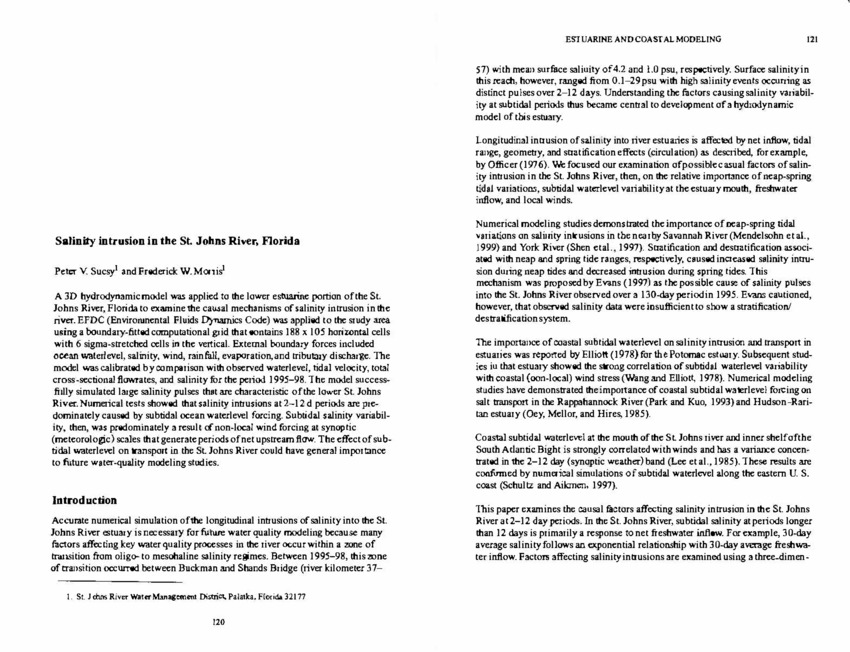Journal Article
AccessSalinity Intrusion in the St. Johns River, Florida
A 3D hydrodynamic model was applied to the lower estuarine portion of the St. Johns River, Florida to examine the causal mechanisms of salinity intrusion in the river. EFDC (Environmental Fluids Dynamics Code) was applied to the study area using a boundary-fitted computational grid that contains 188 x 105 horizontal cells with 6 sigma-stretched cells in the vertical. External boundary forces included ocean waterlevel, salinity, wind, rainfall, evaporation, and tributary discharge. The model was calibrated by comparison with observed waterlevel, tidal velocity, total cross-sectional flowrates, and salinity for the period 1995–98. The model successfully simulated large salinity pulses that are characteristic of the lower St. Johns River. Numerical tests showed that salinity intrusions at 2–12 d periods are predominately caused by subtidal ocean waterlevel forcing. Subtidal salinity variability, then, was predominately a result of non-local wind forcing at synoptic (meteorologic) scales that generate periods of net upstream flow. The effect of subtidal waterlevel on transport in the St. Johns River could have general importance to future water-quality modeling studies.
Publisher - American Society of Civil Engineers
Subjects - Water, Modelling; Salinity
Collection: Section 2: Water Quality (2014)
Citation: Sucsy PV, Morris IV FW. 2001. Salinity Intrusion in the St. Johns River, Florida. Estuarine and Coastal Modeling; 2001(1):120-139 http://ascelibrary.org/doi/abs/10.1061/40628%28268%298
